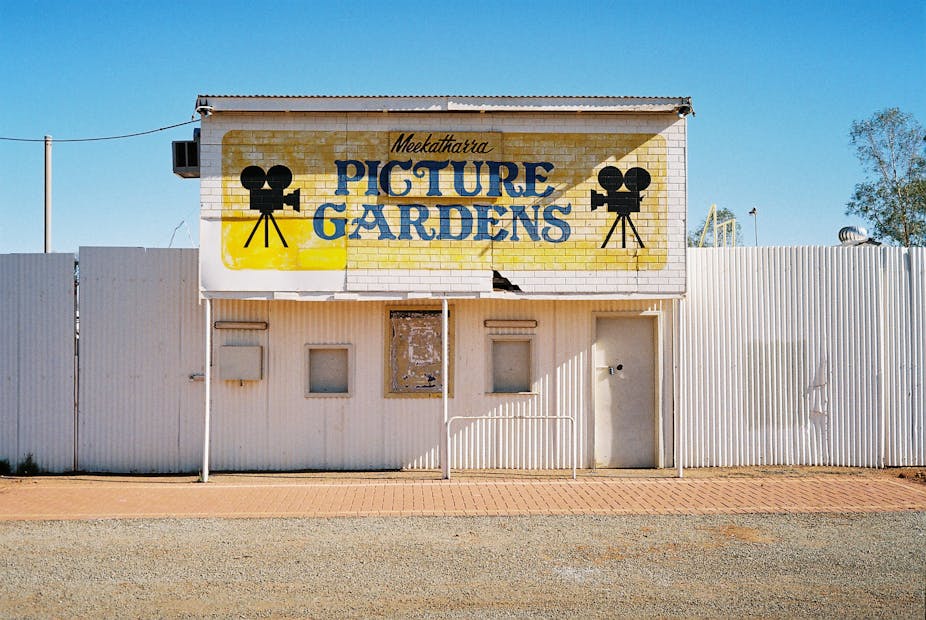Screen Australia has just released details of its latest investment package. It is a mixed bag but there’s always a Red Dog or Wolf Creek waiting somewhere.
There’s a story that’s probably apocryphal but also telling:
When Sony took over the US film studio Columbia Pictures Entertainment in 1989, the Sony executives were astonished to be told that only one picture in ten made much money.
“Why do you make the other nine” they asked?
So picking winners is cinema is difficult and committees are the preferred strategy when it’s public money at risk. But is it the best strategy?
In the first years of the renaissance of the Australian film production industry, two state film corporations sprang into life. First off, was the South Australian Film Corporation, the fiefdom of the mercurial Gil Brealey and his band of adventurers. Gil enjoyed the unquestioned support of Premier Don Dunstan; he was chairman as well as CEO; and he had a casing vote on the board of three. Gil could have his way.
By comparison, the Victorian Film Corporation (now Film Victoria) had six film and TV industry people on the board under an independent chairman. The board’s decisions were argued at length, thrashed out some would say.
Whose decisions were better? The South Australian’s had greater commercial and critical successes and greater failures, while the Victorian’s investments produced films some meritorious, and many forgettable.
There are risk minimisation strategies available for any investor and Screen Australia’s choices show the first principle of risk minimisation: spread the risk and include a few blue chips.
In the money – the films that won funding
For Strangerland, the blue chip is the cast of Nicole Kidman, Guy Pearce and Hugo Weaving. That’s a head start for international sales. The project’s a step-up for director Kim Farrant, but she is well supported by Irish producer Macdara Kelleher, with some 20 feature film credits in senior production roles behind him, and Australian Naomi Wenck whose producer credits include the under-rated Newcastle. Newcastle did good business on the US college and gay circuit.
Force Of Destiny will be, at very least, a sentimental success. Director Paul Cox is our Antipodean Woody Allen with a rusted-on Australia art house audience. Cox has fought film bureaucrats for 40 years to make his style of film. He has fought cancer for the past half-decade and this partly autobiographical film is his story.
The track record of Australian films with a sport at the core is not good. One of the best was Crackerjack (2002). However, the flannelled fools were bowlers not cricketers.
Backyard Ashes is having another go, with an Aussie versus Pom cricketing theme. It has shades of The Castle in its earthy Aussie values of backyards, beers and cricket contest. The creative credits are shared among a tight group. The producers are Anne Robinson, Mark Grentell and Peter Cox, the writers Mark Grentell and Peter Cox and the director is Mark Grentell. Film making does need some perspective. There’s a long tradition of celebrating the larrikin in our films and Backyard Ashes sits in that tradition.
Last Cab To Darwin will be a challenge for director Jeremy Sims. Any film about dying with dignity would be but, with a cast reportedly led by Jacki Weaver, Michael Caton and Ningali Lawford, it should be possible. It’s a road movie as Rex embarks on ‘an epic drive from Broken Hill to Darwin to die on his own terms’, and discovers life on the way.
Its success hinges on how Rex’s discovery works on the screen. For director Jeremy Sims Last Cab is a very different challenge to Last Train to Freo also by writer Reg Cribb, or Beneath Hill 60. A good low budget risk.
Kids’ movies and television are sites of hugely imaginative production work, as was evident at the inaugural Asian Animation Summit in Kuala Lumpur last December. So Maya the Bee Movie, a Germany–Australia co-production, is a good bet. Flying Bark Productions, founded by animators Yoram and Sandra Gross in the late 1960s, is proven as a producer of children’s entertainment.
The second blue chip is a feature documentary, Women He’s Undressed. It celebrates the Hollywood career of Australian-born Orry-Kelly. He designed costumes for Marilyn Monroe, Jane Fonda, Bette Davis and Ava Gardner and his films include Some Like It Hot, Casablanca, and Oklahoma.
Women He Undressed again brings together director Gillian Armstrong and writer Katherine Thomson who collaborated on the outstanding Unfolding Florence: The Many Lives of Florence Broadhurst in 2006, this time teamed with veteran producer, Damien Parer.
Armstrong has move effortlessly between drama and documentary since Smokes and Lollies (1976), the first of a ‘seven-up’ series the most recent being Love, Lust & Lies (2010), but she and Thompson seem to have something for fabric, frills and design.
Screen Australia’ investment is A$5.4 million and the total budget amount to about A$32.3 million. Today, budget details are confidential but six feature length films averaging A$5.4 million says that all but Strangerland will be small budget pictures.

